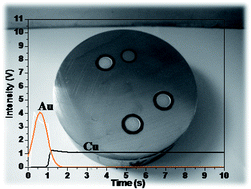Radiofrequency glow discharge (rf-GD) coupled to optical emission spectrometry (OES) has proved to be a powerful tool for the direct solid bulk materials and in-depth profile analysis. Rf-GD is generally operated in continuous mode, but the interest in pulsed (P) rf-GD is steadily increasing. So far, however, investigations to assess the analytical performance of rf-PGD-OES are scarce and systematic studies to analyse homogeneous and/or coated samples are still lacking. This work aims at critical comparison of the practical analytical performance characteristics of rf-GD-OES operated in continuous and pulsed modes. Pulsed rf-GD was carefully evaluated for the analysis of three conducting materials with different matrices (copper, steel and aluminium) and for bulk homogenous non-coated glasses of varying thicknesses (1, 1.8 and 2.8 mm). The comparison was performed in terms of crater shapes, sputtering rates and emission yields, demonstrating that increased emission yields could be obtained in pulsed mode working with small pulse widths (i.e. at high pulse frequency and relatively short duty cycle). Further, the potential of the pulsed rf-GDs has been studied also for depth profiling analysis of a thin gold layer (∼30 nm) deposited on conductive and insulating substrates. An improvement in the depth-resolution, under selected experimental conditions, was clearly observed. Finally, those observed advantages of pulsed rf-GD-OES were successfully tested by analysing real-life samples including commercial tinplates and a multilayered glass.

You have access to this article
 Please wait while we load your content...
Something went wrong. Try again?
Please wait while we load your content...
Something went wrong. Try again?


 Please wait while we load your content...
Please wait while we load your content...